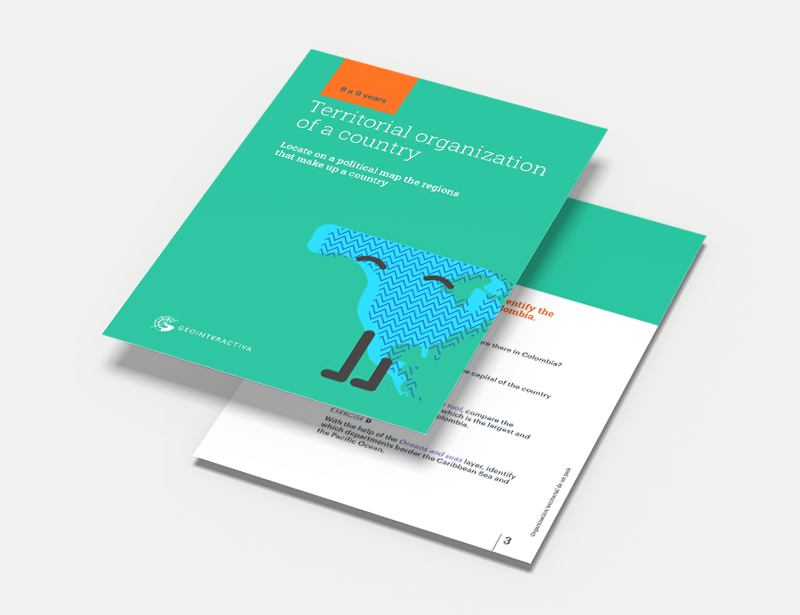
primary (8-9 years old).
Territorial organisation of a country
In this download you will find a pdf resource with instructions to make your classes more dynamic. On the one hand, we show you which of the platform’s tools you will be working with and, on the other hand, we propose activities suitable for students aged 8-9 years old.
Do you want your classes to be stimulating? Start today with Geointeractiva.
we propose to teach geography in a fun way
What will your students learn from this educational activity??
In this activity you will discover the importance of understanding the territorial organisation of your country. This learning helps pupils to understand how the world they live in is organised. It is therefore essential that children from an early age learn about the territorial organisation of their country, including knowledge of its administrative divisions (regions, etc.) and their capitals.
Why is it important for primary school children to know the territorial organisation of their country?
There are multiple reasons why it is important for them to know the territorial organization of their country. Some of these are presented below:
It fosters their sense of belonging:
By knowing the different regions and their capitals, students can develop a sense of belonging and pride in their country. This allows them to feel more connected to the history and culture of their nation, which is essential for their social and emotional development.
It facilitates their understanding of the world around them:
Geography is a discipline that helps us understand how the world we live in is organized. By knowing the different regions and their capitals, children can have a better understanding of how their country works and how it relates to other countries around the world.
It helps them develop cognitive skills:
Learning geography can also help children develop cognitive skills such as memory, attention, and spatial perception. By studying different maps and geographic locations, children can learn to interpret visual and spatial information, which can be beneficial for their overall academic development.
How to teach the territorial organization of the country to primary school children?
To teach the territorial organization of the country, it is important to use pedagogical methods that are accessible and understandable. Some didactic strategies that can be useful to achieve this objective are presented below:
Using maps:
Maps are visual tools that can be very effective in teaching the territorial organization of the country to primary school children. It is important to use maps that are clear and easy to understand, and that show the different regions and their capitals in a clear and precise way.
Using educational games:
Educational games can be a fun and effective way to teach the territorial organization of the country. Board games, digital games, or even outdoor games can be used to allow children to learn in a playful and participatory way.
Organizing visits to emblematic places:
Organizing visits to emblematic places in the country, such as historical monuments or cultural landmarks, can be an effective way to teach children about the history and culture of their country, as well as its territorial organization. Visits can be complemented with didactic activities that allow them to learn in an active and participatory way.
Involving parents and the community:
It is important to involve parents and the wider educational community in the process of teaching geography and the territorial organisation of the country. Activities and events can be organised that allow parents and educators to actively participate in the learning process, such as attending geography fairs or giving presentations at school where children can show what they have learned.
Conclusions
In summary, teaching the territorial organization of the country to primary school children is essential for their cognitive, social, and emotional development. Through the learning of geography, children can develop a sense of belonging and pride in their country, better understand the world around them, and develop important cognitive skills. It is important to use accessible and participatory didactic strategies to ensure that the learning of geography is effective and meaningful for students. With good geography education, girls and boys can become informed and aware citizens of their environment, which is essential for their development and that of society as a whole.